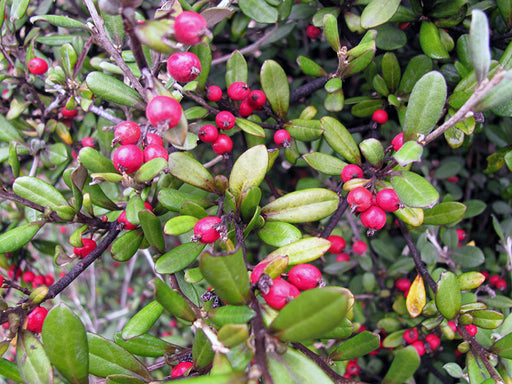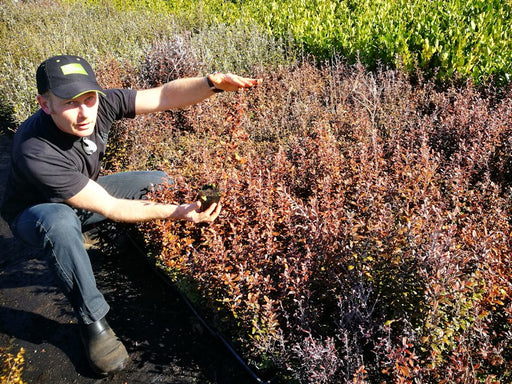Why Dry, Hot Sites Matter — and Why Choose Natives
Dry, hot sites — with high summer temperatures, low rainfall, strong sunlight, and often very well-drained or poor soils — pose real challenges for many garden plants. Soils may be sandy, rocky, or low in organic matter, and water is often limited or irregular. Exposure to wind and high UV accelerates moisture loss from both soil and foliage.
Many exotic plants struggle under these conditions and need frequent watering or special care. In contrast, New Zealand native plants have evolved with drought, nutrient-poor soils, and exposure. Their adaptations — such as small or waxy leaves, deep root systems, and drought-resistant growth habits — mean they often thrive where others fail, making them ideal for low-maintenance, sustainable landscaping across NZ.
Choosing What to Plant: Match Plants to the Site
Dry Hills & Slopes
Challenges: intense sun, strong winds, dry soils, thin topsoil.
Good native plant choices:
-
Kunzea ericoides (Kānuka) — fast-growing shrub, excellent for stabilising slopes; drought-tolerant with small, tough leaves.

-
Leptospermum scoparium (Mānuka) — hardy flowering shrub that thrives in dry, sunny conditions and attracts pollinators.

-
Ozothamnus leptophyllus (Tauhinu) — silvery shrub, highly drought-tolerant; adds texture and light-reflecting foliage.

-
Coprosma ‘Red Rock’ — low-growing divaricating shrub, ideal for banks or underplanting; tough and drought-resistant.

Rocky Outcrops & Ridges
Challenges: shallow soil, heat exposure, high wind, low water retention.
Good native plant choices:
-
Chionochloa rubra — forms dramatic tussocks and absolutely loves full sun and dry rocky conditions.

-
Dodonea Viscosa (Akeake) — one of the toughest natives available. Specifically bred for harsh, dry, windy conditions and rocky soils.

-
Olearia paniculata — hardy shrub adapted to dry, well-drained sites; adds structure and texture.
Dry River Terraces, Plains & Open Flats
Challenges: open sun, low rainfall, nutrient-poor soils.
Good native plant choices:
-
Austroderia richardii (Toetoe) — architectural clumping grass; provides shelter and movement; drought-tolerant.

-
Coprosma black cloud — hardy low, dense, groundcover that provides shelter and stabilises soil.

-
Carex testacea — thrives in full sun and hot conditions.

-
Astelia Westland — clumping, sun-loving plant; ideal for dry, exposed spots.

-
Coprosma ‘Hāwera’ — compact, hardy shrub for groundcover or edging; thrives in dry conditions.

Practical Planting & Care Strategies for Dry, Hot Site
-
Site Preparation & Soil Improvement
Proper site preparation is critical in dry, hot conditions. Start by assessing soil depth, texture, and drainage. Loosen compacted soils to improve water infiltration, particularly in clay or heavy soils. For very poor or sandy soils, mix in organic matter such as compost or aged mulch to provide slow-release nutrients and improve moisture retention. Avoid over-fertilising — high nutrient inputs can encourage fast, lush growth that is more susceptible to heat stress and requires more water. Where possible, contour the ground, create small swales, or plant in clusters to help catch and retain any rainwater. -
Mulching
Mulching provides multiple benefits in dry, hot gardens. A 5–10cm layer of bark, wood chip, or gravel around new plantings keeps soil cooler, retains moisture, and suppresses weeds, which compete aggressively for limited water. For exposed slopes or plains, mulch also helps protect young roots from extreme temperature fluctuations and reduces the erosion of shallow soils. Consider using coarse mulch rather than fine mulch to allow water penetration and avoid creating a crust that repels rainfall. -
Planting Time
Timing your planting is crucial. Early autumn or late winter/early spring allows plants to develop strong root systems before the peak summer heat. Autumn planting benefits from residual soil warmth and occasional rain, encouraging early root growth. Spring planting is suitable where winters are harsh and soils remain too wet for easy digging. Avoid planting during midsummer unless irrigation is available, as heat and sun can stress young plants and increase mortality rates. -
Watering During Establishment
Even drought-tolerant natives need supplemental water when first planted. Deep, infrequent watering encourages roots to grow downward, increasing long-term resilience. Focus on watering the root zone rather than surface foliage to reduce evaporation. After the first 1–2 growing seasons, most dry-climate natives can survive prolonged dry periods with little or no irrigation, relying on their deep or fibrous roots and adaptive leaf structures. -
Shelter & Protection for Young Plants
In highly exposed areas, temporary protection can make the difference between survival and failure. Use windbreaks, shade cloth, or nurse plants to reduce moisture loss, prevent windburn, and protect tender foliage. Strategically placing tougher, drought-hardy plants on the windward side of more delicate species creates natural microclimates that shield young plants from extremes of sun and wind, enhancing survival rates and reducing maintenance needs. -
Long-Term Benefits & Maintenance
Dry-climate native plants offer exceptional long-term value. Once established, they require minimal maintenance, tolerate summer droughts, and resist heat stress. Their roots stabilize soil on slopes, ridges, or plains, reducing erosion. These plants also provide year-round structure, texture, and natural interest, while supporting native birds, insects, and other wildlife. Over time, layering shrubs, grasses, and groundcovers creates self-sustaining communities that enhance resilience against extreme weather events, reflecting the natural ecosystems they evolved in.
Planning Your Dry, Hot Garden (Anywhere in NZ)
-
Survey Your Site Thoroughly
Before planting, take a detailed look at your site’s conditions. Note sun exposure patterns, prevailing wind direction, soil type and depth, drainage during rain events, and any areas prone to drought or waterlogging. Observing these factors helps in positioning plants where they will thrive naturally. -
Classify Your Dry Zone
Different dry environments require tailored plant selection. Identify whether your site is a slope, ridge, flat plain, river terrace, or rocky outcrop. Each zone has different exposure, soil depth, and water-holding capacity. Slope and ridge areas may benefit from deep-rooted shrubs and tussocks for soil anchoring, while flats may tolerate more groundcovers and structural grasses. -
Select a Mix of Plant Types for Resilience
Diversity is key to a resilient garden. Combine tough shrubs (Mānuka, Tauhinu, Coprosma), structural grasses or tussocks (Poa cita, Toetoe), and hardy perennials for texture and ecological value. Groundcovers and low-growing shrubs stabilize soil, suppress weeds, and reduce evaporation from bare soil. Planting species with varying root depths ensures that all soil layers are used efficiently, improving moisture retention and drought resilience. -
Prepare the Soil Thoughtfully
Loosen compacted soil, mix in organic matter where necessary, and ensure adequate drainage. Avoid over-amending soil in naturally poor areas, as native plants are adapted to low-fertility conditions and can be disadvantaged by overly rich soils. Mulch deeply to reduce water loss, protect roots from heat, and suppress weeds during early establishment. -
Plant Strategically and Establish Effectively
Place drought-hardy species in exposed areas to act as “nurse plants,” providing shelter for more sensitive species in the lee. Stagger plantings to create clusters and natural windbreaks, which reduces water stress, limits soil erosion, and builds microclimates that improve survival of less hardy plants. -
Allow Plants to Mature and Develop Natural Structure
Once established, native plants form layered communities: low groundcovers stabilize soil, mid-height shrubs create shelter and structure, and taller grasses or shrubs provide windbreaks. This layered design reduces heat impact, improves soil moisture retention, and enhances biodiversity by supporting birds, insects, and other native wildlife. Over time, the garden becomes self-sustaining, resilient, and visually appealing, reflecting the natural ecosystems of dry, hot regions.
Why Choose Natives for Dry, Hot Landscapes
Using native plants in dry, hot conditions offers a combination of ecological, practical, and aesthetic advantages:
-
Drought Tolerance: Native species evolved to survive periods of low rainfall and poor soils, requiring minimal irrigation once established.
-
Heat and Sun Resilience: Their small, tough, or waxy leaves reflect sunlight and reduce water loss, enabling survival in extreme sun and heat.
-
Soil Stabilization: Deep or fibrous roots anchor soil on slopes, ridges, and plains, preventing erosion and maintaining landscape structure.
-
Low Maintenance: Established native gardens need less pruning, fertilising, and watering than exotic alternatives, saving time and resources.
-
Ecological Value: Native plants support local wildlife, including birds, insects, and lizards, creating functional ecosystems rather than just decorative plantings.
-
Long-Term Sustainability: A well-designed native dry-climate garden is resilient to environmental extremes, reduces dependency on irrigation, and matures into a self-sustaining landscape.
By planning carefully, selecting the right combination of plants, and giving them time to establish, even the most exposed, sun-baked, or drought-prone sites across New Zealand can flourish as thriving, resilient native gardens.









